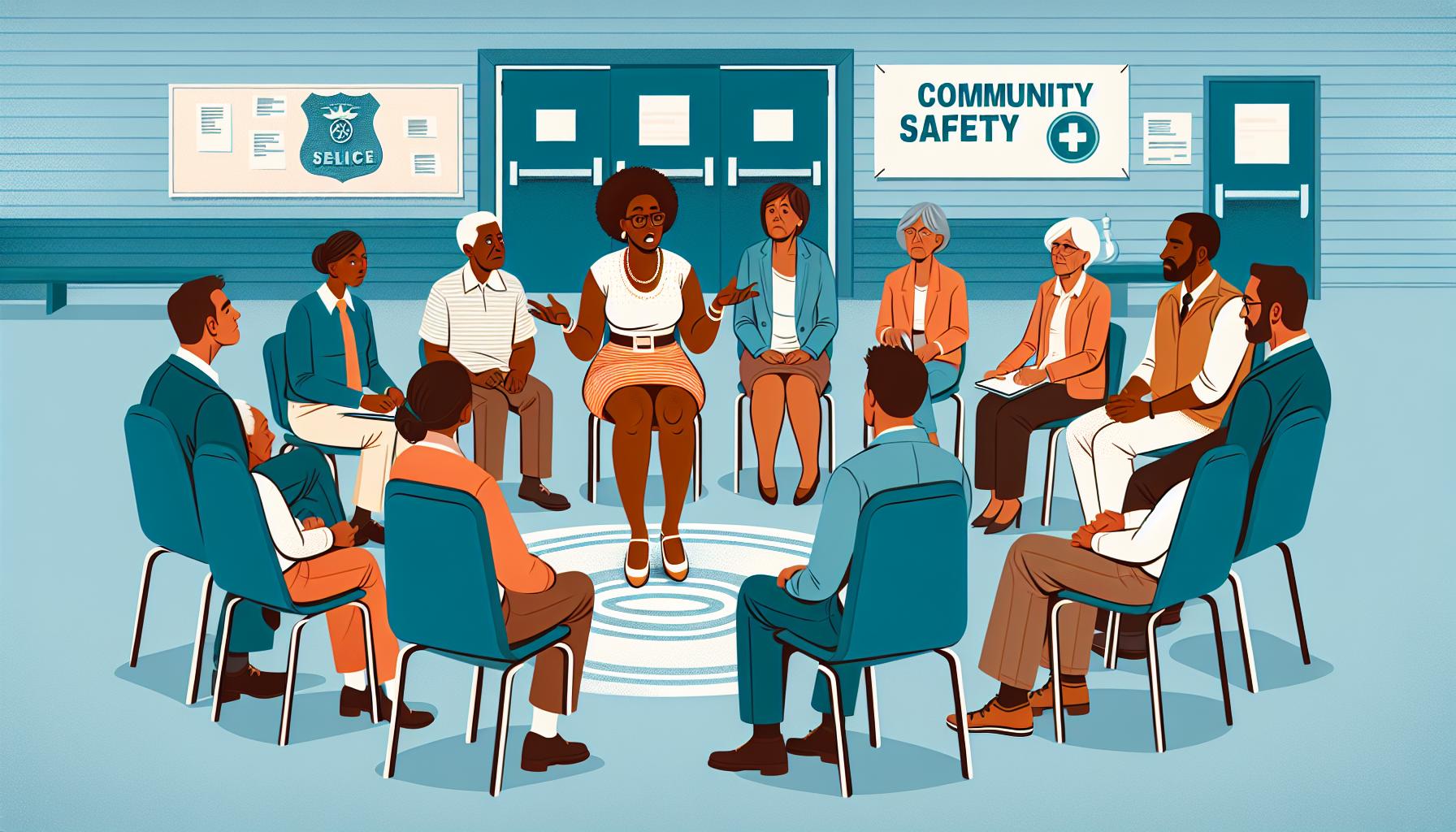Public safety and crime prevention are at the heart of every thriving community. As cities grow and evolve, so do the challenges of keeping neighborhoods safe and secure. It’s not just about reacting to incidents; it’s about creating proactive strategies that address the root causes of crime while fostering trust between residents and law enforcement.
I’ve noticed how cities are adopting innovative approaches to tackle these issues head-on. From leveraging technology to improve response times to implementing community-based programs that strengthen local ties, the focus has shifted toward sustainable solutions. But how effective are these efforts, and what more can be done? Let’s explore how the city is stepping up to ensure safety for everyone.
Understanding The City’s Public Safety Strategy
The city employs a multi-faceted approach to enhance public safety and crime prevention. These strategies integrate data-driven technology, community engagement, and policy reforms to address both immediate and systemic challenges.
Data-Driven Technology
Advanced systems, including predictive analytics, help law enforcement identify potential hotspots for crime. Real-time surveillance tools, like CCTV networks and license plate recognition systems, assist in monitoring high-risk areas. By analyzing crime patterns, agencies prioritize resources effectively.
Community Engagement Initiatives
Regular town hall meetings and neighborhood watch programs foster collaboration between residents and law enforcement. Outreach efforts, such as youth mentorship programs and conflict resolution workshops, aim to build trust and reduce crime motivated by social or economic factors.
Policy and Legislative Reforms
Policy changes focus on reducing recidivism through rehabilitation programs tied to probation. Sentencing reforms target non-violent offenders, shifting resources towards addressing serious crimes. Gun control measures, where permitted, tighten regulations on illegally obtained firearms.
Through these measures, the city’s strategy prioritizes proactive solutions to promote safer neighborhoods.
Key Crime Prevention Initiatives

The city uses a combination of innovative strategies and collaborative efforts to prevent crime and ensure public safety. These initiatives focus on community engagement, advanced technology, and partnerships with local organizations.
Community Policing Programs
Community policing strengthens connections between law enforcement and residents. Officers regularly engage with neighborhoods through foot patrols, local events, and outreach programs. For example, specific districts host monthly crime prevention meetings where residents can voice concerns and learn about safety measures. This approach builds trust, identifies potential issues, and fosters collaboration to address local crime.
Technology And Surveillance Enhancements
Advanced technology plays a major role in crime prevention efforts. The city uses real-time surveillance cameras, predictive analytics systems, and automated license plate readers to monitor areas with higher crime rates. For instance, predictive algorithms help allocate police resources more effectively by analyzing historical crime data. These tools not only improve response times but also act as deterrents for criminal activities.
Collaboration With Local Organizations
Partnerships with local organizations expand the scope of crime prevention efforts. Nonprofits, community groups, and educational institutions contribute resources and expertise to address underlying causes of crime. Examples include after-school programs that keep youth engaged and workshops promoting conflict resolution. These collaborations enhance community resilience and reduce risk factors associated with criminal behavior.
Addressing Root Causes Of Crime

Reducing crime requires proactive measures targeting its underlying drivers. Efforts focus on addressing youth vulnerability and socio-economic disparities.
Youth Engagement And Education Programs
Structured programs provide young people with opportunities to deter criminal activity. Mentorship initiatives connect at-risk youth with positive role models, promoting essential life skills. Workshops on conflict resolution and emotional intelligence nurture problem-solving abilities. Partnerships with schools enhance educational access, encouraging higher attendance and academic achievements. Youth centers offer safe spaces for after-school activities, combining recreation with personal development.
Economic And Social Support Services
Economic instability contributes significantly to crime rates, making targeted support critical. Job training services equip residents with employable skills, creating pathways to stable careers. Access to affordable housing alleviates financial stress and fosters community stability. Healthcare services, including mental health counseling, address untreated conditions often linked to criminal behaviors. Social assistance programs provide food, childcare, and essential services for families in need, reducing economic strain and linked criminal risks.
Measuring The Impact Of Safety Measures

Evaluating the effectiveness of safety initiatives ensures resources target the right issues. Cities rely on data and direct input from residents to assess public safety outcomes.
Crime Rate Trends And Statistics
Analyzing crime rate trends offers insights into the success of implemented measures. Authorities track violent crime, property crime, and other offenses to identify decreases or emerging patterns. For example, a 15% drop in burglary rates across monitored districts may indicate successful deployment of neighborhood patrols or surveillance tools. Comparisons across quarterly or annual statistics highlight areas in need of additional interventions while reflecting broader progress.
Community Feedback And Satisfaction
Community feedback is critical for assessing public confidence in safety measures. Residents participate in surveys, forums, and focus groups to share concerns and evaluate initiatives like foot patrol effectiveness or youth engagement outcomes. High satisfaction levels with programs such as community policing often correlate with improved trust between law enforcement and communities. Regular input helps refine strategies to ensure ongoing alignment with public priorities.
Challenges And Areas For Improvement

Addressing public safety and crime prevention requires overcoming several challenges. Identifying gaps in resources and navigating privacy concerns are critical to ensuring effective measures.
Resource And Funding Limitations
Limited budgets and resource constraints hamper the implementation of comprehensive public safety programs. Insufficient funding restricts the deployment of advanced technologies like predictive analytics tools or real-time surveillance systems in all high-risk areas. Staffing shortages in law enforcement reduce response times, with many cities unable to maintain adequate patrol coverage or expand community policing efforts. Additionally, underfunded community initiatives, such as youth mentorship programs or job training workshops, fail to scale their impact, leaving vulnerable populations underserved.
Balancing Privacy With Security
Ensuring public safety without intruding on privacy rights presents ongoing challenges. Technologies like surveillance cameras and data analytics tools, while effective in monitoring high-crime areas, often raise concerns about potential misuse or overreach. Residents express apprehension about constant monitoring, fearing that data collection may compromise personal freedoms. Striking a balance, cities implement transparency measures, including public forums and independent oversight bodies, to foster trust and ensure that surveillance practices align with legal and ethical standards.
Conclusion
Public safety and crime prevention require a delicate balance of innovation, community involvement, and resource management. Cities are making strides by combining technology, policy reforms, and grassroots initiatives to tackle crime while addressing its root causes. These efforts not only enhance safety but also build stronger, more resilient neighborhoods.
Ongoing challenges like funding limitations and privacy concerns highlight the need for transparency and collaboration. By continuously evaluating the impact of safety measures and prioritizing public trust, cities can refine their strategies to meet evolving needs. A united approach ensures everyone has a role in creating safer, more inclusive communities.
Frequently Asked Questions
What is the importance of public safety in communities?
Public safety is crucial for communities to thrive as it fosters trust, reduces crime, and enhances the overall quality of life. Safe environments encourage economic growth, social cohesion, and community engagement.
How does technology assist in crime prevention?
Technology aids crime prevention by improving response times, identifying hotspots through predictive analytics, and monitoring high-risk areas with real-time surveillance systems. These tools help law enforcement allocate resources effectively.
What is community policing, and why is it important?
Community policing involves collaboration between law enforcement and residents through initiatives like foot patrols, meetings, and outreach programs. It builds trust, strengthens connections, and fosters a sense of safety.
How do youth programs help prevent crime?
Youth programs provide mentorship, conflict resolution skills, and safe spaces for at-risk individuals. These initiatives address underlying issues like vulnerability, guiding young people toward positive development and away from criminal activities.
What role do economic and social supports play in reducing crime?
Economic and social supports, such as job training, affordable housing, and mental health services, alleviate systemic issues like poverty and untreated illnesses. These services reduce financial and social stress, lowering crime rates.
How can cities measure the success of safety programs?
Cities measure success by analyzing crime rate trends, tracking offenses, and collecting community feedback through surveys and forums. These insights ensure resources address critical concerns effectively.
What are the challenges in implementing public safety programs?
Key challenges include funding limitations, staff shortages, and balancing safety with privacy rights. These issues hinder the adoption of advanced technologies and comprehensive programs.
How do cities address privacy concerns with surveillance technologies?
Cities ensure transparency by holding public forums, adopting independent oversight mechanisms, and aligning surveillance practices with legal and ethical standards.
Why is resident input essential in public safety strategies?
Resident input provides valuable insights into community needs, concerns, and satisfaction. This feedback helps authorities refine strategies to align with public priorities and improve trust.
What are some examples of community-based crime prevention programs?
Examples include town hall meetings, mentorship initiatives, foot patrols, and local partnerships with nonprofits and schools. These programs promote collaboration and address the root causes of crime.
